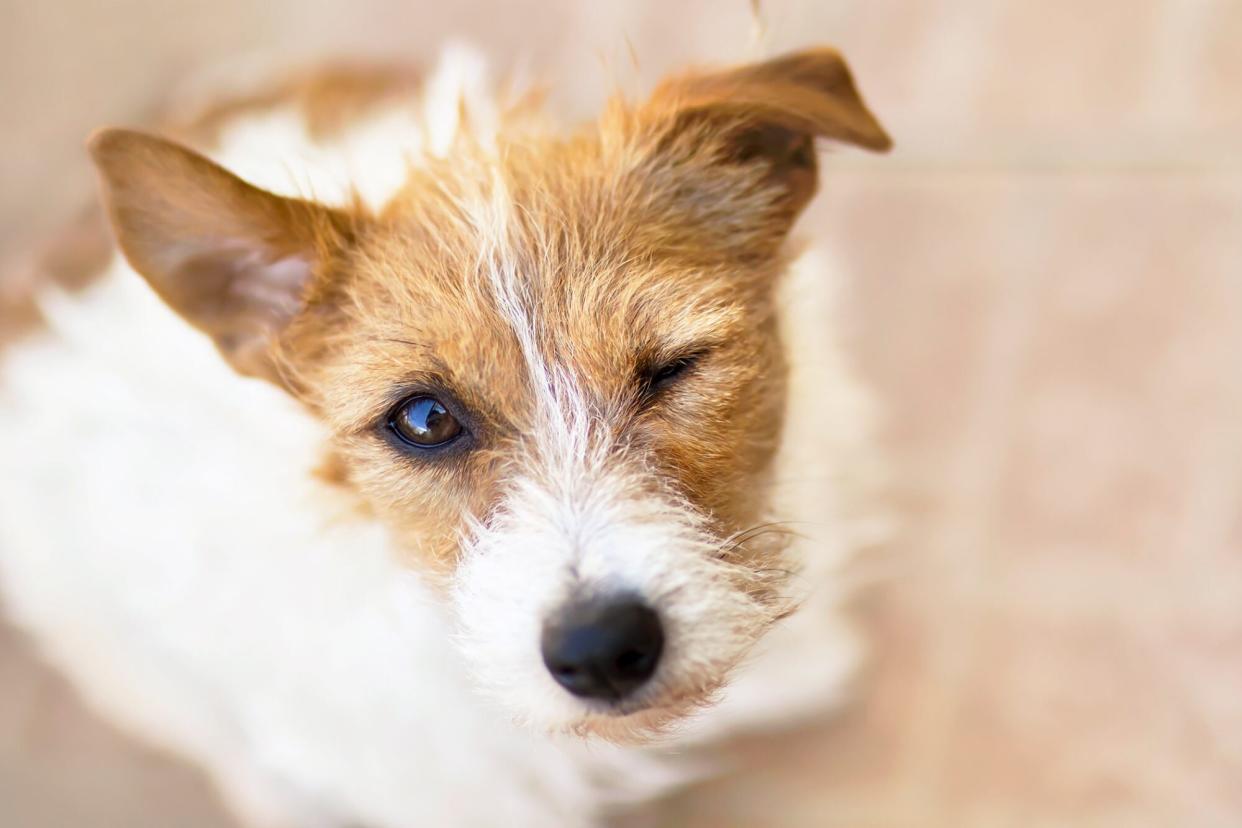Why Do Dogs Wink? The Reasons Might Surprise You

Wavetop / Getty
You're hanging out on the couch with your dog when you glance over and she … winks at you. At least, that's what it looks like. Is this for real? Possibly. After all, studies show dogs are in-tune with their families, picking up on all sorts of aspects of our own behavior and watching for our cues.
So why do dogs wink? Megan Conrad, DVM, is a veterinary consultant at Hello Ralphie, a telehealth veterinary service. She says winking is often an intentional behavior with various meanings—but there could be some health reasons behind it, too.
Why Does My Dog Wink at Me?
Depending on the situation, you can interpret dog winking in many ways. "Winking can be a sign of affection, that the dog is at peace, seeking attention, or possibly mimicking their owner if this is an action they do frequently," Conrad says. Your pooch may also just be checking in with you from across the couch with her playful wink—a "Hey, how you doin'?" or "I love you this much!" kind of moment.
If you're trying to decipher what it means when a dog winks at you, take note of her body language, too. If her tail is high and wagging and she has erect ears, this shows interest or is a request for attention (similar to when she paws at you).
RELATED: Why Do Dogs Wag Their Tails?
Canines who crouch, roll on their backs, or slip their tail between their legs may be communicating they're submissive. They frequently demonstrate appeasement gestures like these to indicate they mean no harm. Winking, blinking, play bowing, lip licking, and lowering their head and ears are additional ways pups let you and other dogs know they're eager to get along.
Can a Winking Dog Have Health Problems?
Frequent winking, especially with the same eye, can be a sign of something wrong. Dogs may be apt to close an eye repeatedly if they're experiencing pain, light sensitivity, or discomfort. And, just like humans, dogs wink or blink when they come in contact with an irritant such as dust, dirt, or hair. Other reasons why dogs wink are due to symptoms of an eye infection.
"If you notice discharge, increased or involuntary blinking (called blepharospasm), redness in or around the eye, or any injury, schedule an appointment with your veterinarian right away," Conrad says.
Another cause of frequent winking and blinking is entropion, a genetic eye condition that affects brachycephalic breeds with heavy brows, plump faces, and short noses. Some of the largest dog breeds develop entropion too. As the ligaments of the outer corners of their eyes droop, this causes the eyelids to slack inward. The good news is this condition is often successfully corrected with surgery.
But overall, winking is a normal and benign behavior commonly seen in dogs. If yours is prone to the occasional wink, it won't take much to determine what she's trying to communicate, and you may even have fun winking back or teaching her to wink on cue.
Training a Dog to Wink
As long as there aren't any health issues, Conrad says winking is a trick you can teach your dog. And just like any other positive reinforcement training, using a treat to reward the action helps her learn.
When asking for a wink, a verbal command should be used and can be accompanied by a nonverbal action like the wink itself, Conrad says. Here's how it might work:
With your pup sitting in front of you, touch one side of their muzzle by their whiskers. This might prompt an automatic winking response. If so, give your dog a treat.
To include a verbal cue such as "wink," say it along with the touch and, when she winks again, provide another treat.
With consistent repetition, you should be able to remove the touch completely and simply speak the cue to get a cute wink.

